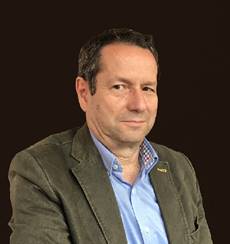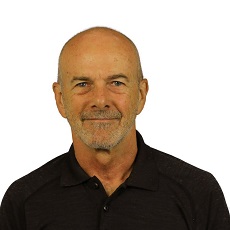Plenary Speakers
Compression of immersive imagery
Ioan Tabus
Department of Computing Sciences, University of Tampere, Tampere, Finland

We consider in this talk solutions to the common problems of predictive model structure selection for sparse modelling, that arise in the complex settings of plenoptic image compression and point cloud compression, which are nowadays major standardization topics in jpeg and mpeg communities. We have developed the main 4D Prediction mode, which is at the core of the forthcoming JPEG Pleno Light Field standard. We have contributed to the standardization activities several schemes for the compression of both high density camera array images and of plenoptic camera images. The regularities and similarities existing between neighbor angular views were successfully exploited for achieving efficient compression results, within a flexible system having desirable functionalities, such as hierarchical organization allowing random access to the views and a flexible interconnection to the existent 2D image compression standards. We discuss here architectural and algorithmic solutions for the modelling and compression problems, with exemplifications to both plenoptic image compression and point cloud compression.
Ioan Tabus received the Ph.D. degree (with honors) from Tampere University of Technology, Finland, in 1995. He held teaching positions in the Department of Control and Computers, "Politehnica" University of Bucharest from 1984 to 1995. From 1996 he was a Senior Researcher and since January 2000, he has been a Professor in the Department of Signal Processing at Tampere University of Technology, which was merged into University of Tampere in 2019. His research interests are in light field image processing, plenoptic image compression, points clouds compression, audio, image and data compression, genomic signal processing, and statistical signal processing. He is coauthor of two books and more than 250 publications in the fields of signal compression, image processing, bioinformatics, and system identification. He served as an Associate Editor of the IEEE Transactions on Signal Processing and for the Signal Processing of EURASIP. He has served as a guest editor of special issues for IEEE Signal Processing Magazine, for Signal Processing of EURASIP, and for IEEE Journal of Selected Topics in Signal Processing. He was the Editor-in-Chief of the EURASIP Journal on Bioinformatics and Systems Biology from 2006 to 2014. Dr. Tabus is the co-recipient of 1991 "Train Vuia" Award of Romania, the 2001 NSIP Best Paper Award, the 2004 NORSIG Best Paper Award, the 2016 3DTv Best Paper Award, and the ICIP 2017 Light Field Image Coding Challenge Award. He is leading the team that designed and implemented the 4D prediction mode of the forthcoming JPEG Pleno Light Field standard.
From Pixels to Voxels: How is Coding Evolving?
Fernando Pereira
Instituto Superior Técnico, Universidade de Lisboa - Instituto de Telecomunicações, Portugal

Multimedia experiences play a growing role in our daily lives as its overwhelming presence vastly impacts many important application areas such as entertainment, sports, education, communication, art and medicine. The recent emergence of powerful imaging sensors is allowing to acquire much richer, faithful, realistic and immersive representations of the visual scenes, notably 3D visual representations, thus offering the users high quality experiences with navigation and immersion functionalities.
The light information associated to these richer visual representations may be modeled by the so-called plenoptic function, which has a limited number of practical acquisition models. In this context, the light field and the point cloud representation paradigms deserve special reference. While the light field representation model is based on a high number and high density of 2D scene perspectives (thus using pixels), the point cloud model represents the visual scene by a set of 3D points (thus using voxels), the so-called geometry, located on the objects surfaces, and associated attributes, e.g. color, reflectance and normals. Both representation models have the potential to offer new functionalities, notably the so-called 6 Degrees of Freedom (DoF) immersion, where different and appropriate visual information is offered to the user while exploiting the three possible rotational degrees of freedom and the 3 possible translational degrees of freedom, in the same way as in the real world.
The natural consequence of these very rich, realistic and immersive representations is a very high amount of data, which requires appropriate coding to allow efficient storage and transmission. This evidence of massive amounts of data and the growing pressure from the industry for appropriate coding solutions has led both the JPEG and MPEG standardization groups, the most influential in the imaging and visual data coding arenas, to initiate projects targeting the standardization of coding solutions for both light fields and point clouds.
Fernando Pereira is currently with the Department of Electrical and Computers Engineering of Instituto Superior Técnico and with Instituto de Telecomunicações, Lisbon, Portugal.
He is responsible for the participation of IST in many national and international research projects. He acts often as project evaluator and auditor for various organizations.
He is Area Editor of the Signal Processing: Image Communication Journal and Associate Editor of the EURASIP Journal on Image and Video Processing, and is or has been member of the Editorial Board of the Signal Processing Magazine, Associate Editor of IEEE Transactions of Circuits and Systems for Video Technology, IEEE Transactions on Image Processing, IEEE Transactions on Multimedia, and IEEE Signal Processing Magazine. In 2013-2015, he was the Editor-in-Chief of the IEEE Journal of Selected Topics in Signal Processing.
He is or has been a member of the IEEE Signal Processing Society Technical Committees on Image, Video and Multidimensional Signal Processing, and Multimedia Signal Processing, and of the IEEE Circuits and Systems Society Technical Committees on Visual Signal Processing and Communications, and Multimedia Systems and Applications.
He was an IEEE Distinguished Lecturer in 2005 and elected as an IEEE Fellow in 2008 for “contributions to object-based digital video representation technologies and standards”. He has been elected to serve on the Signal Processing Society Board of Governors in the capacity of Member-at-Large for a 2012 and a 2014-2016 term. Since January 2018, he is the SPS Vice-President for Conferences.
Since 2013, he is also a EURASIP Fellow for “contributions to digital video representation technologies and standards”. He has been elected to serve on the European Signal Processing Society Board of Directors for a 2015-2018 term. Since 2015, he is also a IET Fellow.
He has been the MPEG Requirements Chair from 2002 to 2007 and since February 2016 he is the JPEG Requirements Chair.
He is/has been a member of the Scientific and Program Committees of many international conferences and workshops. He has been the General Chair of the Picture Coding Symposium (PCS) in 2007, the Technical Program Co-Chair of the Int. Conference on Image Processing (ICIP) in 2010 and 2016, the Technical Program Chair of the International Workshop on Image Analysis for Multimedia Interactive Services (WIAMIS) in 2008 and 2012, and the General Chair of the International Conference on Quality of Multimedia Experience (QoMEX) in 2016.
He has been participating in the MPEG standardization activities, notably as the head of the Portuguese delegation, chairman of the MPEG Requirements Group, and chairman of many Ad Hoc Groups related to the MPEG-4 and MPEG-7 standards. He is a co-editor of ‘The MPEG-4 Book’ and ‘The MPEG-21 Book’ which are reference books in their areas.
He won the first Portuguese IBM Scientific Award in 1990, an “ISO award for Outstanding Technical Contribution” for his contributions to the MPEG-4 Visual Standard in 1998 and an Honorable Mention of the UTL/Santander Totta Award for Electrical Engineering in 2009, 2010, 2011 and 2012. He won the ‘Excellent Professor’ award from the Electrical and Computers Engineering Department of Instituto Superior Técnico in 2010, 2011 and 2012.
He has contributed more than 250 papers in international journals, conferences and workshops, and made several tens of invited talks at conferences and workshops. His areas of interest are video analysis, coding, description and adaptation, and advanced multimedia services.
The Pyramid of Visibility
Andrew Watson
Apple, USA

The Pyramid of Visibility is a simplified model of the spatio-temporal luminance contrast sensitivity function (Watson and Ahumada 2016). It posits that log contrast sensitivity is a linear function of spatial frequency, temporal frequency, and log luminance. It is valid only away from the spatiotemporal frequency origin, and within a limited range of photopic adapting luminance. Despite these constraints, the Pyramid has proven very useful in a wide range of applications. In this talk I will trace the development of the Pyramid, describe some applications, and discuss extensions to chromatic discrimination and to the peripheral visual field (Watson 2018).
Watson, A. B. (2018). "The Field of View, the Field of Resolution, and the Field of Contrast Sensitivity." Journal of Perceptual Imaging 1(1): 10505-10501-10505-10511.
Watson, A. B. and A. J. Ahumada (2016). "The pyramid of visibility." Electronic Imaging 2016(16): 1-6.
Andrew B. Watson is the Chief Vision Scientist at Apple, Inc. in Cupertino, California. In that position he leads the application of vision science to a broad range of Apple technologies, applications, devices and displays. Dr. Watson was an undergraduate at Columbia University and received a PhD in Psychology from the University of Pennsylvania. He subsequently held postdoctoral positions at the University of Cambridge in England and at Stanford University in California. From 1982 to 2016 he was the Senior Scientist for Vision Research at NASA Ames Research Center in California. His research focuses on computational models of early vision, including spatial, temporal and motion processing, and application of vision science to imaging technology. He is the author of over 100 scientific papers, and he has seven patents, in areas such as acuity measurement, image compression, video quality, and measurement of display artifacts. He has 18079 citations and an h-index of 60. In 2001, Watson founded the Journal of Vision, where he served as Editor-in-Chief until 2013. In 2016 he was again elected Editor-in-Chief, for the term 2018-2022. Dr. Watson is a Fellow of the Optical Society of America, a Gold Fellow of the Association for Research in Vision and Ophthalmology, and a Fellow of the Society for Information Display. He recently served on the Board of Directors of the Vision Sciences Society. He also serves as the Vice Chair for Vision Science and Human Factors of the International Committee on Display Measurement. In 1990, he received the H. Julian Allen Award from NASA. He is the 2007 recipient of the Otto Schade Award from the Society for Information Display, and the 2008 winner of the Special Recognition Award from the Association for Research in Vision and Ophthalmology. In 2016 he received the Holst Award from Philips Research and The Technical University of Eindhoven. In 2011, he received the Presidential Rank Award from the President of the United States.